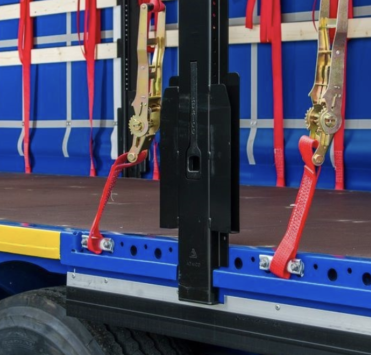How to organize LCL delivery from China to Ukraine: Fast and profitable logistics for your business

Consolidated cargo shipping (LCL — Less than Container Load) from China by sea is one of the most efficient and cost-effective ways to transport goods that do not require a full container (FCL — Full Container Load). This method allows for the combination of shipments from different senders into one container, significantly reducing costs and optimizing logistics processes.
Let’s examine all the key aspects of consolidated cargo shipping from China by sea, including the shipping process, advantages, potential drawbacks, required documents, rates, delivery times, and customs clearance specifics.
What is Consolidated Cargo Shipping (LCL)?
Consolidated cargo (LCL) is a logistics term used to describe cargo that occupies less than a full container. When a company or entrepreneur doesn’t have enough goods to fill a 20-foot or 40-foot container, they can use LCL services. This means that several different shipments from various senders will be consolidated into one container, and the shipping costs will be shared among all participants.
Key Stages of Consolidated Cargo Shipping from China
- Cargo Consolidation. Cargo from multiple clients is collected at the logistics operator’s warehouse in China, where it is consolidated into one container.
- Transportation to the Port of Departure. After consolidation, the goods are transported to the port, for example, in Shanghai, Shenzhen, or Ningbo, for loading onto a ship.
- Sea Transportation. The cargo is shipped by sea to the destination port. For LCL shipments, the most common destination port is Gdańsk, Poland.
- Unloading and Deconsolidation. Upon arrival at the destination port, the containers are unloaded, and the goods are distributed to trucks for further transportation.
- Customs Clearance. Passing import customs control in the recipient country is a necessary stage before the cargo can be delivered to a warehouse or directly to the consignee.
Advantages of Consolidated Cargo Shipping from China by Sea
- Cost Savings. By paying for only part of the container, companies can significantly reduce their logistics costs. This is especially beneficial for businesses that do not need a full container.
- Optimization of Logistics Costs. Since multiple shipments are transported in one container, the costs of transportation, storage, and cargo handling are shared among several participants, lowering the overall transportation costs.
- Shipping Flexibility. Consolidated cargo allows for the shipping of small batches of goods without the need to wait for a large volume to fill the container. This is particularly important for those operating in dynamic market conditions.
- Shipping of Various Types of Goods. Since one container can include goods of different types (e.g., textiles, electronics, furniture), it allows for the easy transportation of various types of cargo simultaneously.
Drawbacks of Consolidated Cargo Shipping
- Longer Delivery Time. The process of consolidation and deconsolidation can take more time compared to full container loading (FCL). Waiting for the container to be filled may add several days to the total transit time.
- Possible Delays at Customs. If one of the shipments in the container has documentation or customs issues, it can delay the unloading of all the cargo in the container.
Shipping Rates for Consolidated Cargo
Shipping rates for consolidated cargo from China by sea depend on the following factors:
- Cargo Volume. The shipping cost depends on the cargo volume, measured in cubic meters (CBM).
- Cargo Weight. For lightweight but bulky cargo, a volumetric coefficient may be applied, adjusting the weight to volume ratio.
- Port of Departure and Port of Destination. The greater the distance between ports, the higher the transportation costs may be.
- Additional Costs. These may include consolidation fees, deconsolidation fees, storage charges, and customs clearance costs.
Delivery Times for Consolidated Cargo
Delivery times for consolidated cargo from China by sea can vary depending on the port of departure and the destination. Typically, transit time ranges from 50 to 60 days. It’s important to factor in the time required for cargo consolidation in China and potential delays during deconsolidation at the destination warehouse.
Customs Clearance of Consolidated Cargo
Customs clearance is a crucial part of consolidated cargo shipping from China. The process includes:
- Export Customs Clearance in China. The cargo must pass customs control before leaving China. Often, the sender takes on this task, working with customs brokers.
- Import Customs Clearance in Ukraine. After arriving at the port of Gdańsk, the cargo must pass transit control. This requires all necessary documents, including invoices, bills of lading, and T1 forms.
Ports and Routes for Consolidated Cargo Shipping
Popular departure ports in China: Shanghai, Ningbo, Shenzhen, Guangzhou, Tianjin.
Destination port: Gdańsk, Poland.
These ports are major hubs for sea logistics and provide regular shipments between China and Ukraine.









